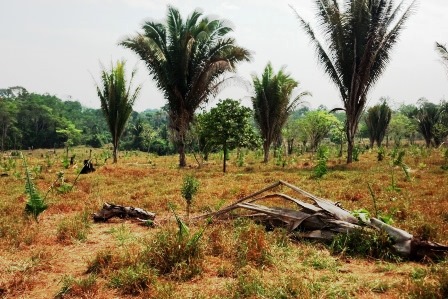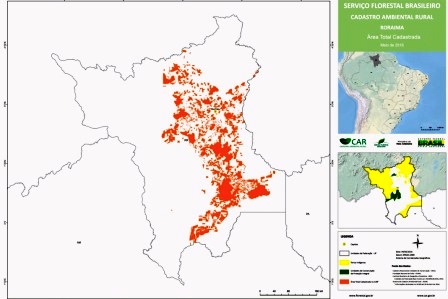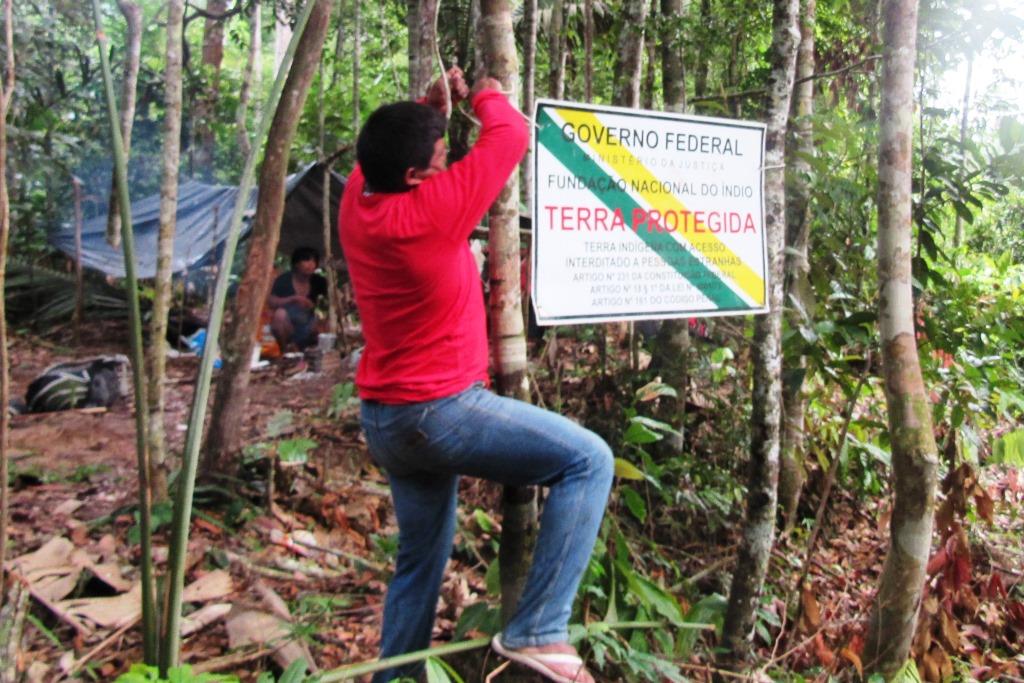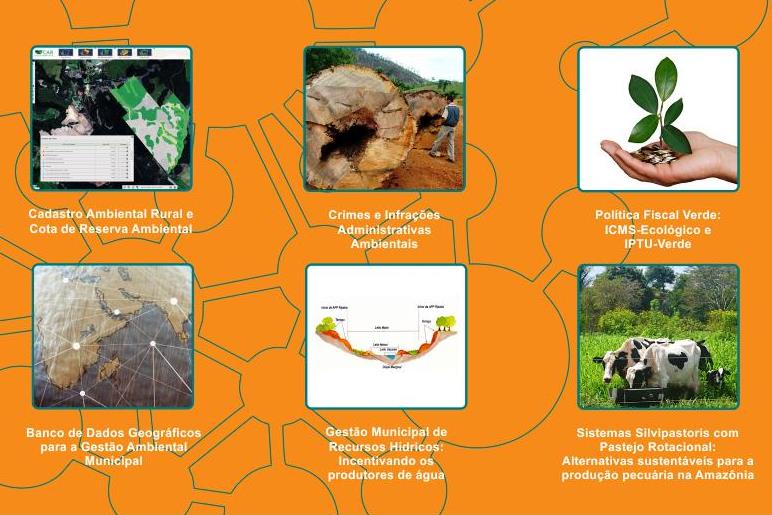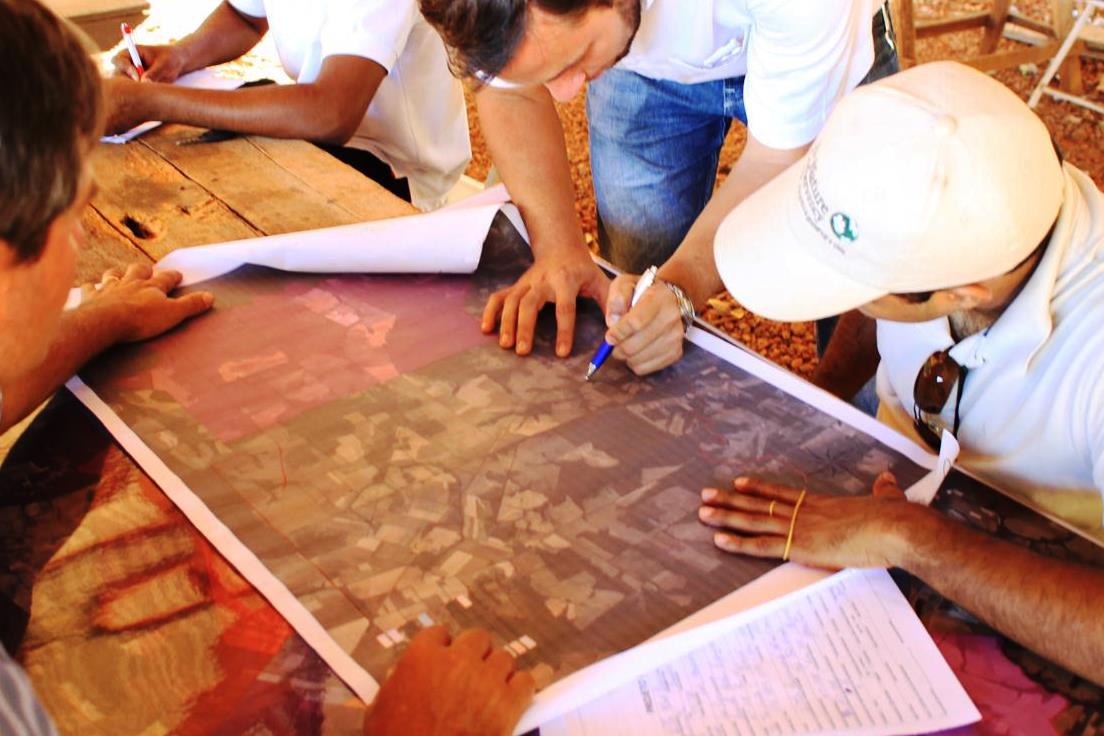Indicators of efficacy and effectiveness
The project activities contributed to the results related to the components "Monitoring and Control" (2), "Territorial Planning" (3) and "Science, Innovation and Economic Instruments" (4) of the Amazon Fund Logical Framework.
Below are the results of some of the indicators agreed to monitor the expected direct effects.
- Number of municipal employees trained in geotechnology tools to improve environmental management and deforestation control (output indicator)
Target: 152 | Result achieved: 263 (90 women and 173 men)
- Number of municipal employees trained in participatory mapping methodology for purposes of rural environmental registration (output indicator)
Target: 76 | Result achieved: 176 (60 women and 116 men)
- Number of rural properties registered in the CAR (outcome indicator)
Target: not defined | Result achieved: from 72,200 (2015) to 121,708 (2019)
- Area of rural properties registered in the CAR (outcome indicator)
Target: 80% of the area registered in the CAR| Result achieved: 84% of the registerable area
- Number of volunteer environmental agents trained and specified by gender (output indicator)
Target: 30 | Result achieved: 166 (72 women and 94 men)
- Extent of protected areas with strengthened environmental management and/or with the control of their strengthened territory (outcome indicator)
Target: 7.6 million ha | Result achieved: 22 million hectares
- Number of scientific, pedagogical or informative publications (outcome indicator)
Target: 9 | Result achieved: 23
The measurements of the agreed indicators show that all expected values were exceeded.
Institutional and administrative aspects
For the execution of the project, Technical Cooperation Agreements (TCAs) were signed with the governments of 24 municipalities, in the states of Amazonas, Pará, Mato Grosso and Rondônia, aiming at the implementation of actions to promote the strengthening of municipal environmental management.
An ACT was also signed with the Instituto de Terras do Pará (Iterpa), with the intervention of the following state government departments: State Secretariat for Agricultural and Fisheries Development – Sedap, State Secretariat for Economic Development, Mining and Energy (Sedeme); and State Secretariat for Environment and Sustainability – Semas. This ACT had as its object the elaboration and implementation of the Rural Land Registry (CARF) to improve the process of land regularization of ITERPA in areas under the jurisdiction of the government of the state of Pará.
An ACT was also signed with the Institute of Forest Development and Biodiversity of the State of Pará – Ideflor-bio, in addition to Imazon, civil society organizations, namely: International Conservation of Brazil (CI Brazil); Amazon Conservation Team (Ecam); Institute for Indigenous Research and Training (Iepé); Tropical Forest Institute (IFT); and Institute for Forest and Agricultural Management and Certification (Imaflora). This ACT aimed to develop the thematic components related to the management and monitoring of state UCs in Pará, through technical and scientific support.
With the Secretary of State for the Environment of the State of Amazonas, an ACT was also signed with the purpose of implementing the Sustainable Municipalities Program (MS Amazonas), through joint training actions, technical advice, information exchange and technology transfer applied to environmental management.
In addition to these Acts, informal partnerships were established with the Institute of Technical Assistance and Rural Extension (Emater) and with the Municipal Secretariats of Environment of Oriximiná, Óbidos and Monte Alegre, as well as with the Municipal Secretariat of Agriculture of Oriximiná, all in the state of Pará, which supported the process of training and monitoring the activities of voluntary environmental agents in these respective municipalities.
Risks and lessons learned
In the actions aimed at strengthening the environmental management of priority municipalities, different strategies and levels of implementation of national public policies regarding the decentralization of environmental management and monitoring and control of deforestation were identified.
In the state of Amazonas there was great synergy between the agenda of the project and that of the Sustainable Municipalities Program – MS Amazonas, with priority actions benefiting seven municipalities in the south of the state, which were also incorporated into the project that initially planned to act only in Boca do Acre and Lábrea.
In the state of Pará, due to the history of decentralization of state management to the municipalities, the adherence of the project was also high. In Rondônia, decentralization seemed more incipient, but the four target municipalities joined the project. In the state of Mato Grosso, the period of implementation of the project coincided with restructuring in the state secretariat and with the discussion on strategies for decentralization of environmental management. In this context, the project was joined by five municipalities in Mato Grosso.
The provision of environmental information to municipal managers was an important point of the project, since some municipalities lacked information and resources to understand their own territory in land and protected areas.
In the actions related to the land theme, it was verified that the theme of transparency remains challenging, because it depends on the progress in the organization of the databases of the land agencies and because it demands the prioritization of this activity by its managers. In this sense, there is a risk that many states will continue with little progress on this agenda if there is no greater demand from society and its control bodies.
A lesson learned from the partnership with the Instituto de Terras do Pará was the importance of having used a participatory process (with its employees) to diagnose the points to be improved in the land regularization procedures, as well as the collective construction of a project for information management software in the agency.
Regarding the Community Environmental Agents Program, it was found that it aroused broad adherence and engagement of the communities.
Sustainability of results
The people who received training through the project – environmental managers and technicians, leaders and community entrepreneurs – reside and work in the region. It is understood that the knowledge acquired will continue to be used, replicated and generate favorable socio-environmental impacts even after the completion of the project.
The publications generated, in addition to disseminating results, recorded the experiences and ways to update this information, thus allowing the continuity of its effects.
Finally, the project's implementation strategy and the nature of its products and services favor the sustainability of its results. The project was implemented in cooperation with governmental and non-governmental institutions that are part of the governance structure of the territories or that operate consistently in the region, so that the inputs generated by the project and appropriated by this contingent of organizations will persist being used, shared and generating impacts after its termination.



